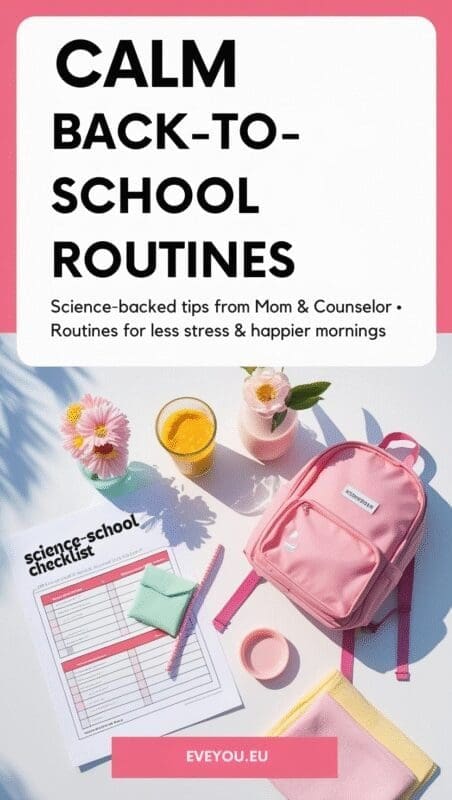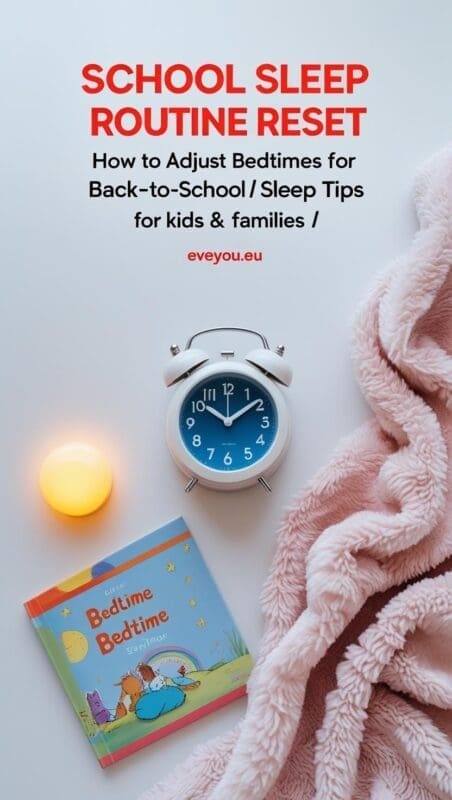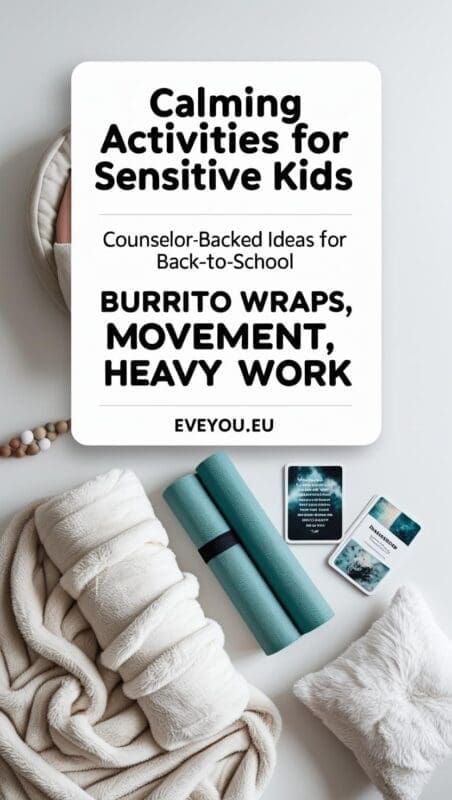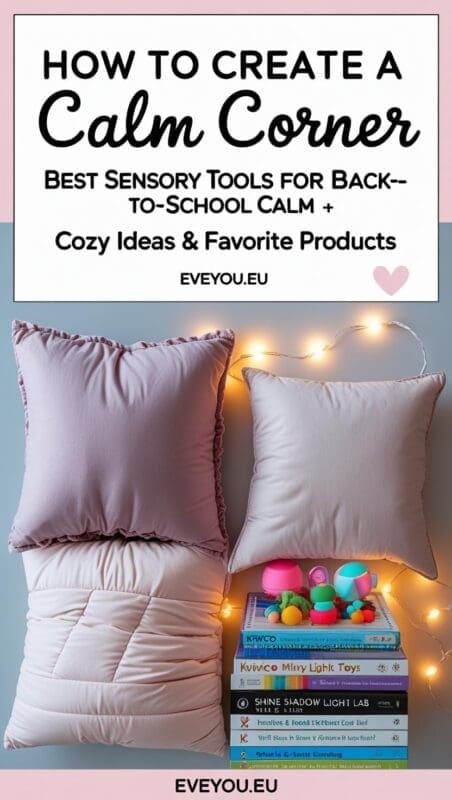Every August, as the first day of school approaches, our house fills with a mix of excitement and nerves—mine included! As a mom, I know how easily little worries can sneak in, turning simple mornings into stressful sprints. As a counselor, I see it in the families I work with, too: the desire for a smooth, calm start, but also the challenge of making it happen in real life.
If you’ve ever wished for less chaos and more connection as school starts up, you’re not alone. Over the years, I’ve learned that creating gentle routines isn’t about being perfect—it’s about giving everyone (kids and parents included) the best possible start, every single day.
In this guide, I’ll share the calming routines that have made our mornings and afternoons happier, how you can personalize them for your family, and why they matter so much for kids’ mental health, learning, and emotional resilience.
Let’s make this back-to-school season your calmest, happiest one yet!
This post may contain affiliate links. As an affiliate, I may earn a small commission if you make a purchase through these links—at no extra cost to you. I only recommend items I personally trust or believe can genuinely support therapists in their professional practice.

Why Calm Routines Make a Real Difference
Science shows that routines help anchor the brain—especially for kids with sensitive or anxious nervous systems. Predictable habits reduce stress hormones like cortisol, support better sleep, and give kids (and parents!) a sense of safety and control. As a mom and counselor, I’ve seen that even simple steps can create a huge shift in mood, energy, and learning.
For us, calm mornings and smooth transitions didn’t come naturally. We learned (sometimes the hard way) that a little planning and a few rituals can transform the whole day.
Step 1: Start Sleep & Wake Adjustments Before School Begins
Science-Backed Sleep Shifts
One of the best things you can do—backed by the American Academy of Sleep Medicine and multiple child psychology studies—is to start adjusting sleep and wake times 2–3 weeks before the first day of school.
Why? Sudden changes in routine can spike anxiety, fatigue, and even affect focus and immune health.
Simple Steps:
- Move bedtime 15–20 minutes earlier every few days until you reach your target school bedtime.
- Wake your child 15–20 minutes earlier each morning as you approach the start of school.
- Reduce screens and stimulating activities in the hour (at least) before bed.
- Create a calming bedtime ritual: bath, quiet reading, soft music, dim lights, or a nervous system-calming activities (like Burrito Blanket Wrap, it’s the most popular in our home )
We start our “practice school nights” in early August, and even small changes make mornings much easier. My child is less groggy, and we all start the day with more patience.

Step 2: Practice a Predictable Morning Routine
Anchor the Day With Familiar Rituals
Kids’ brains love predictability—it makes transitions smoother and helps regulate the nervous system. For children who are anxious or sensitive, knowing what to expect lowers anxiety and builds confidence.
How to Start:
- Practice a school-morning routine 2–3 times before the first day (even on weekends).
- Use a visual checklist with drawings or photos for younger kids: (get dressed, eat breakfast, brush teeth, pack backpack, put on shoes).
- Do “dry runs” for breakfast, dressing, packing, even walking to the bus stop if you can and just go for a short walk around the block.
- Let kids check off steps or use a sticker chart—mastery builds confidence.
Counselor tip:
We keep our checklist on the fridge. My child loves checking things off and being “in charge” of the next step!
Step 3: Nervous System-Calming Activities That Work
Support Sensitive or Anxious Kids with Sensory Rituals
Kids with sensitive nervous systems benefit from sensory and movement-based routines. These activities regulate stress responses and help with focus and calm—science supports their power for all children!
Ideas to Try:
- Burrito Blanket Wrap:
Wrap your child snugly in a soft blanket, tucking them in like a burrito for 1–2 minutes. Deep pressure input calms the body and mind (researched as “proprioceptive input”). - Heavy Work Activities:
Carrying a backpack, pushing a laundry basket, crawling, or animal walks help regulate arousal and attention. - Movement Breaks:
Simple stretches, “shake it out” dances, or family yoga—just five minutes can make a difference. - Calm Corner:
Create a cozy space with soft pillows, a weighted blanket, favorite books, and sensory toys for a quick reset before or after school.
Family favorite:
We do a quick “body burrito” and march like dinosaurs to breakfast. It sounds silly, but laughter and movement help us all start regulated. Another favorite additions to our calm corner has been the KiwiCo Shine & Shadow Light Lab. As both a mom and a counselor, I love how it gently draws my child’s attention, encourages quiet focus, and turns our cozy space into a little science wonderland. Soft lights and simple shadow play can be incredibly calming for sensitive or anxious kids, especially during after-school wind-downs or when emotions run high.
We use it for mindful moments, story time, or just when someone needs a peaceful sensory break. If you want to make your calm corner more inviting, I truly recommend this kit—it’s engaging, beautifully made, and brings a bit of magic into our daily routine.

Step 4: Mindful Breathing and Emotional Check-Ins
Easy Mindfulness for Busy Families
Just one minute of mindful breathing can lower stress and prepare the brain for learning. Emotional check-ins help kids name and share feelings—critical for school transitions.
Simple Ways to Practice:
- Breathing Game: “Smell the flower, blow out the candle”—breathe in slowly (smell the flower), breathe out gently (blow out the candle).
- Use a pinwheel, blowing bubbles, or a stuffed animal on the belly as a breathing visual.
- Quick “feelings check” each morning: let your child point to a picture or share a word for how they feel.
Counselor note:
Mindful breathing is now part of our routine. My child knows we do it if anyone (parent or kid!) feels stressed or overwhelmed.
Step 5: After-School Reset for Calm & Connection
Create Predictable, Nurturing Rituals After School
The school day can be overwhelming—even for the most resilient kids. Reset routines help children (and parents) unwind, reconnect, and process their day.
Simple Ideas:
- Offer a healthy snack (protein + fiber) to stabilize mood and energy.
- Try a gentle “rose and thorn” check-in: everyone shares their favorite and hardest part of the day.
- Allow for quiet time, outdoor play, or creative downtime before homework or evening plans.
- Use a “calm corner” or a few minutes with a weighted blanket or sensory toy.
We always do snack and “rose and thorn” after school. It helps my child process the day and lets us reconnect—even on busy afternoons.
Step 6: Making Calm Routines Stick (Even When Life Gets Busy)
- Be flexible: Routines are meant to support you, not stress you out. Adjust as needed—consistency over perfection!
- Involve your child: Let them help design the checklist or choose the breakfast menu. Ownership increases buy-in.
- Celebrate small wins: Notice when mornings go smoothly, or when your child handles a hard moment well.
- Be kind to yourself: Some days will be messy—and that’s okay. Every small effort adds up.
We’re not perfect, but we keep showing up. Even when things fall apart, returning to our simple routines brings us back to calm.

FAQ: Back-to-School Calm Routine Questions
How can I help an anxious child adjust to school?
Start routines early, keep communication open, use visual aids, and practice separation in low-stress situations.
What if we fall out of routine?
Just start again—progress isn’t lost! Kids are resilient and benefit from even imperfect routines.
Are these routines helpful for teens, too?
Absolutely. Teens also need sleep routines, predictable mornings, movement, and mindful breaks—just with more input into what works for them.
Why Calm Routines Change the School Year—For Everyone
Our back-to-school routines didn’t just make mornings easier—they changed the tone of our entire year. The little rituals—body burritos, morning checklists, “rose and thorn” talks—created more calm, more connection, and more resilience for both my child and myself. As a mom and a counselor, I can promise: these gentle steps make a big impact, especially for sensitive or anxious kids.
If you’re even a little curious, just try one new routine this week. Notice how even a small change affects your mornings, your child’s mood, and your own sense of calm. I’d love to hear your stories, routines, or questions in the comments—let’s support each other through every season of growth.
Related & Recommended
How L. Reuteri Yogurt Changed My Post-COVID Gut and My Motherhood—My Story
Pin this article for later and share your favorite back-to-school tips with our community!

About the Author
Hi, I’m Eve, a former school counselor with a master’s degree in School Psychology and a passionate advocate for children and families navigating sensory challenges. As a mom of children with sensory sensitivities, I deeply understand the journey special-needs parents face, and I dedicate myself to researching and sharing practical solutions to help children thrive and feel comfortable in their bodies. My goal is also to empower counselors, therapists, and psychologists with creative strategies and supportive resources to enrich their everyday practice. When I’m not writing or exploring new therapeutic approaches, you’ll find me spending quality time with my family and continually seeking inspiration from everyday moments.


